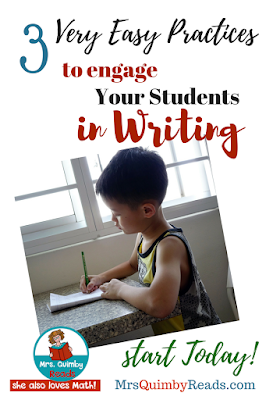 |
| Writing In the Classroom Photo Writing Prompts |
1. First, children need adventures,
experiences and stories to write about...and where will they get them? Teachers can help make a story-filled classroom for their students. Some teachers schedule a story time as part of their literacy practices and strategies. Reading is a wonderful place to start because books are filled with writing, they tell adventures and stories. Telling stories and having conversations about experiences can be a springboard to writing. Reading and listening can be the precursor for writing and speaking. Talk, listen, tell, and write. Tell stories in your classroom, provide opportunities for students to tell their stories. Whenever you become a storyteller, ears start to listen. Be sure to also take the opportunity to look at writing within the texts and books you are reading. Isolating key writing strategies that talented authors use is a great way to show students what a writer does.2. Write!
yes, write and then write some more. Let your students see you write. Write at journal time, write sticky notes, write letters, write, write, write. Put up sticky-notes





